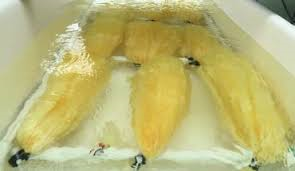
Breaking News
 Lumber Prices Are Flashing a Warning Sign for the U.S. Economy
Lumber Prices Are Flashing a Warning Sign for the U.S. Economy
 The Cost Of Living The American Dream For A Lifetime Has Reached A Whopping 5 Million Dollars
The Cost Of Living The American Dream For A Lifetime Has Reached A Whopping 5 Million Dollars
 Reverse Erectile Dysfunction FAST (Without Viagra)
Reverse Erectile Dysfunction FAST (Without Viagra)
 Who's Buying Up America's Farmland? The Land Grab You Need to Know About
Who's Buying Up America's Farmland? The Land Grab You Need to Know About
Top Tech News
 Methylene chloride (CH2Cl?) and acetone (C?H?O) create a powerful paint remover...
Methylene chloride (CH2Cl?) and acetone (C?H?O) create a powerful paint remover...
 Engineer Builds His Own X-Ray After Hospital Charges Him $69K
Engineer Builds His Own X-Ray After Hospital Charges Him $69K
 Researchers create 2D nanomaterials with up to nine metals for extreme conditions
Researchers create 2D nanomaterials with up to nine metals for extreme conditions
 The Evolution of Electric Motors: From Bulky to Lightweight, Efficient Powerhouses
The Evolution of Electric Motors: From Bulky to Lightweight, Efficient Powerhouses
 3D-Printing 'Glue Gun' Can Repair Bone Fractures During Surgery Filling-in the Gaps Around..
3D-Printing 'Glue Gun' Can Repair Bone Fractures During Surgery Filling-in the Gaps Around..
 Kevlar-like EV battery material dissolves after use to recycle itself
Kevlar-like EV battery material dissolves after use to recycle itself
 Laser connects plane and satellite in breakthrough air-to-space link
Laser connects plane and satellite in breakthrough air-to-space link
 Lucid Motors' World-Leading Electric Powertrain Breakdown with Emad Dlala and Eric Bach
Lucid Motors' World-Leading Electric Powertrain Breakdown with Emad Dlala and Eric Bach
 Murder, UFOs & Antigravity Tech -- What's Really Happening at Huntsville, Alabama's Space Po
Murder, UFOs & Antigravity Tech -- What's Really Happening at Huntsville, Alabama's Space Po
On track to commercial extraction of uranium from seawater

LCW, a Moscow, Idaho clean energy company with early support from PNNL through DOE's Office of Nuclear Energy, developed an acrylic fiber which attracts and holds on to dissolved uranium naturally present in ocean water.
LCW is applying for further SBIR funding for a uranium extraction field demonstration, to be led by PNNL, in the Gulf of Mexico, where the water is much warmer. The material performs much better in warmer water and extraction rates in the Gulf are expected to be three to five times higher, therefore making it more economical to obtain uranium from seawater.
They have chemically modified regular, inexpensive yarn, to convert it into an adsorbent which is selective for uranium, efficient and reusable," said Chien Wai, president of LCW Supercritical Technologies.
The adsorbent material is inexpensive, according to Wai. In fact, he said, even waste yarn can be used to create the polymer fiber.

 Tiny briefcase engine boosts EV range beyond battery power
Tiny briefcase engine boosts EV range beyond battery power 

